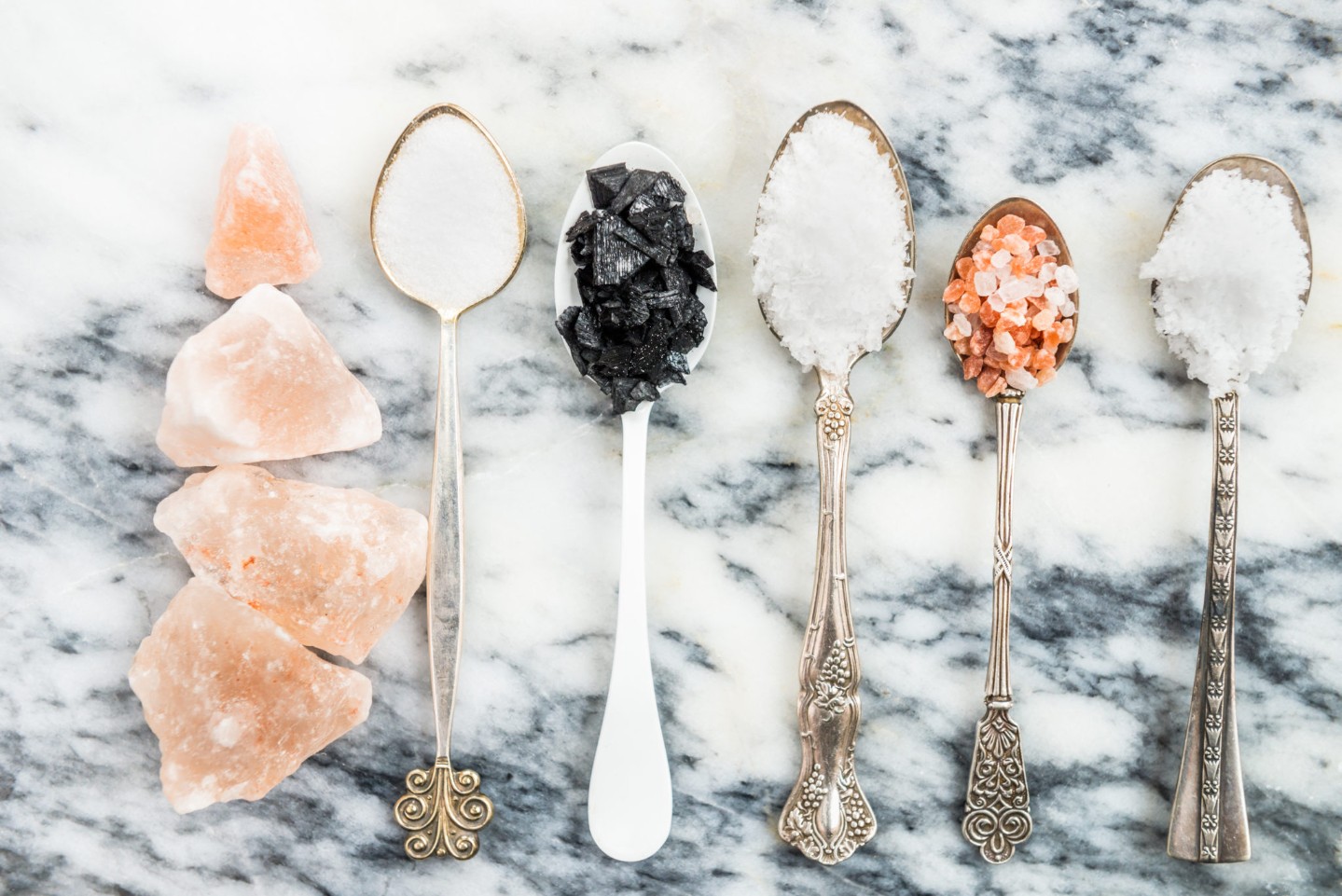One question I am often asked when educating on healthy sodium intakes is, “What is the healthiest salt to use?” With options available differentiated by color and size it can be hard to know if one is better than another. Although they may look different, they have many similarities.
Salt's Role in Our Diets and Health
Salt itself is an important mineral in our diet. It plays a role in fluid regulation, nerve impulses, and muscle functions. However, if consumed in excess can lead to high blood pressure. Some claims suggest that certain types of salt like sea salt or Himalayan pink salt have less sodium than regular salt and therefore can decrease your chances of developing high blood pressure. However, when you look more closely at the chemical composition of each there are very few differences.
Table Salt Recommendations
Regular salt or table salt is the most refined of all the salts and contains about 98% sodium chloride. There are also anti-caking agents mixed in to prevent clumping. Unlike other salts, table salt is usually fortified with iodine. This was started in the early 1920s to prevent abnormal growth and development in children as well as the thyroid disease goiter. However, excessive intakes of regular salt are not needed to meet your iodine needs. The recommended dietary intake (RDI) for iodine is 150 mcg which can be achieved by consuming foods like fish, dairy, eggs, or seaweed. Most multivitamins also contain the recommended amount.
What is Himalayan Pink Salt
Like regular salt, Himalayan pink salt contains up to 98% sodium chloride. The other 2% consists of trace minerals such as potassium, magnesium, and calcium. These trace minerals are what give this salt a pink hue and slightly different taste. It is mined in Pakistan from one of the oldest and largest salt mines in the world. Many claims suggest that Himalayan pink salt is better for your health due to the trace minerals that it may contain. However, with the limited quantities that people normally consume salt it is unlikely there would be any significant health benefits.
Sea Salt
Sea salt is made by evaporating sea water and contains mostly sodium chloride. Depending on where the sea salt is harvested it could contain some trace minerals such as potassium, iron, and zinc. Like Himalayan pink salt, you are unlikely to see any health benefits with regular consumption due to the small amounts of trace minerals available.
What is Kosher Salt?
Kosher salt gets its name because it is mainly used among the Jewish population. What makes this salt different from regular salt is its flakey structure. In the Jewish culture, law requires that they extract all the blood from meat before consumption. Kosher salt’s flakey, coarse structure makes it the optimal choice for this task. Like the other salts, Kosher is mostly sodium chloride.
Try to Regulate Your Salt Intake
Overall, the composition of these salts is very similar and each will be used by your body in the same ways. If you are trying to increase the amount of minerals in your diet, it would be more beneficial to increase fruit and vegetable consumption rather than increase salt consumption. Fruits and vegetable contain a mired of vitamins and minerals along with providing other numerous health benefits. It is important to remember that despite which salt you use, the American Heart Association recommends intakes of no more than 2300 mg or 1 teaspoon of salt per day. For your health, it’s more important that you pay attention to the amount of salt you are consuming rather than the type. For more health eating tips, contact a CHI Health Dietitian today.




